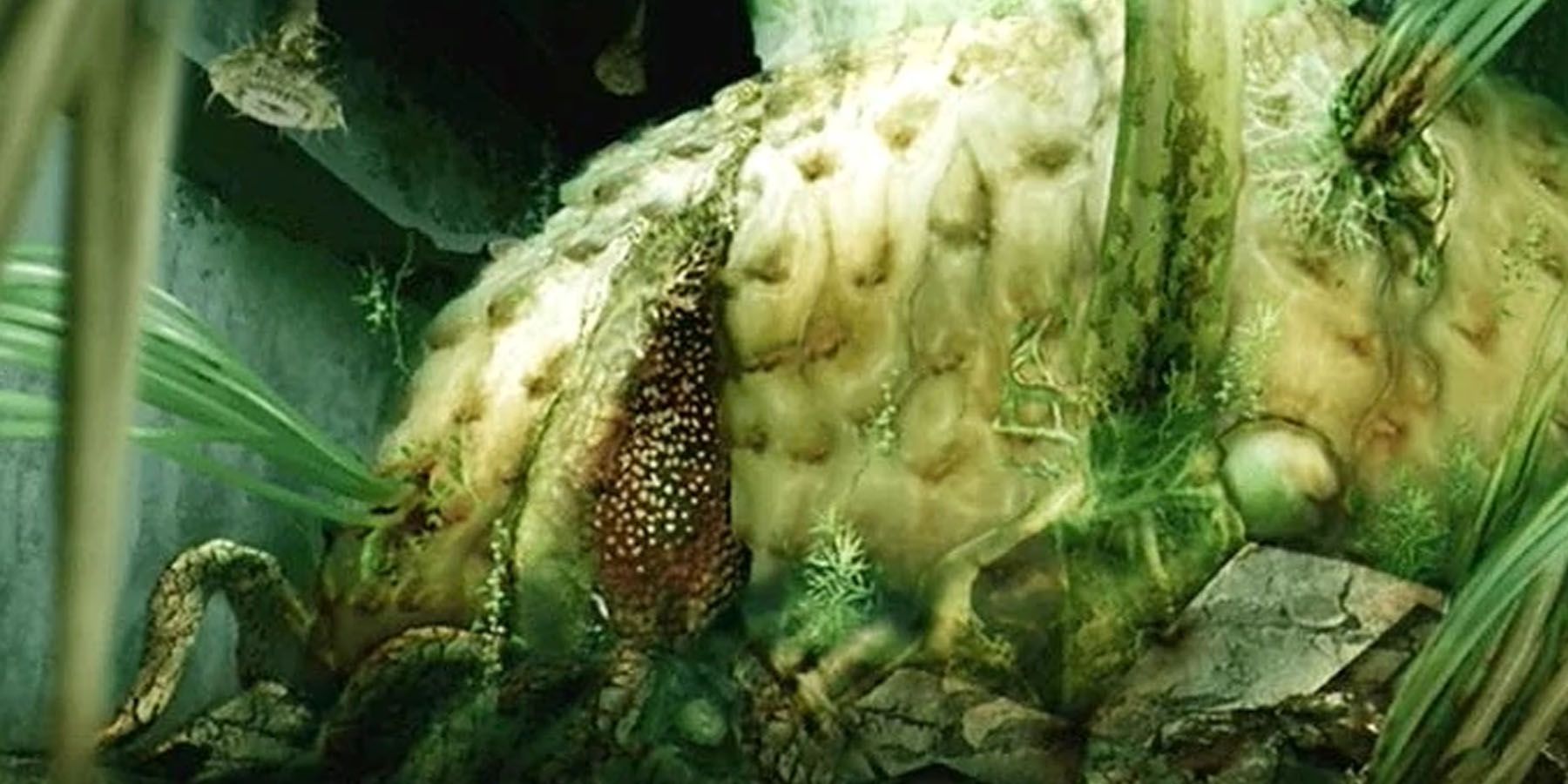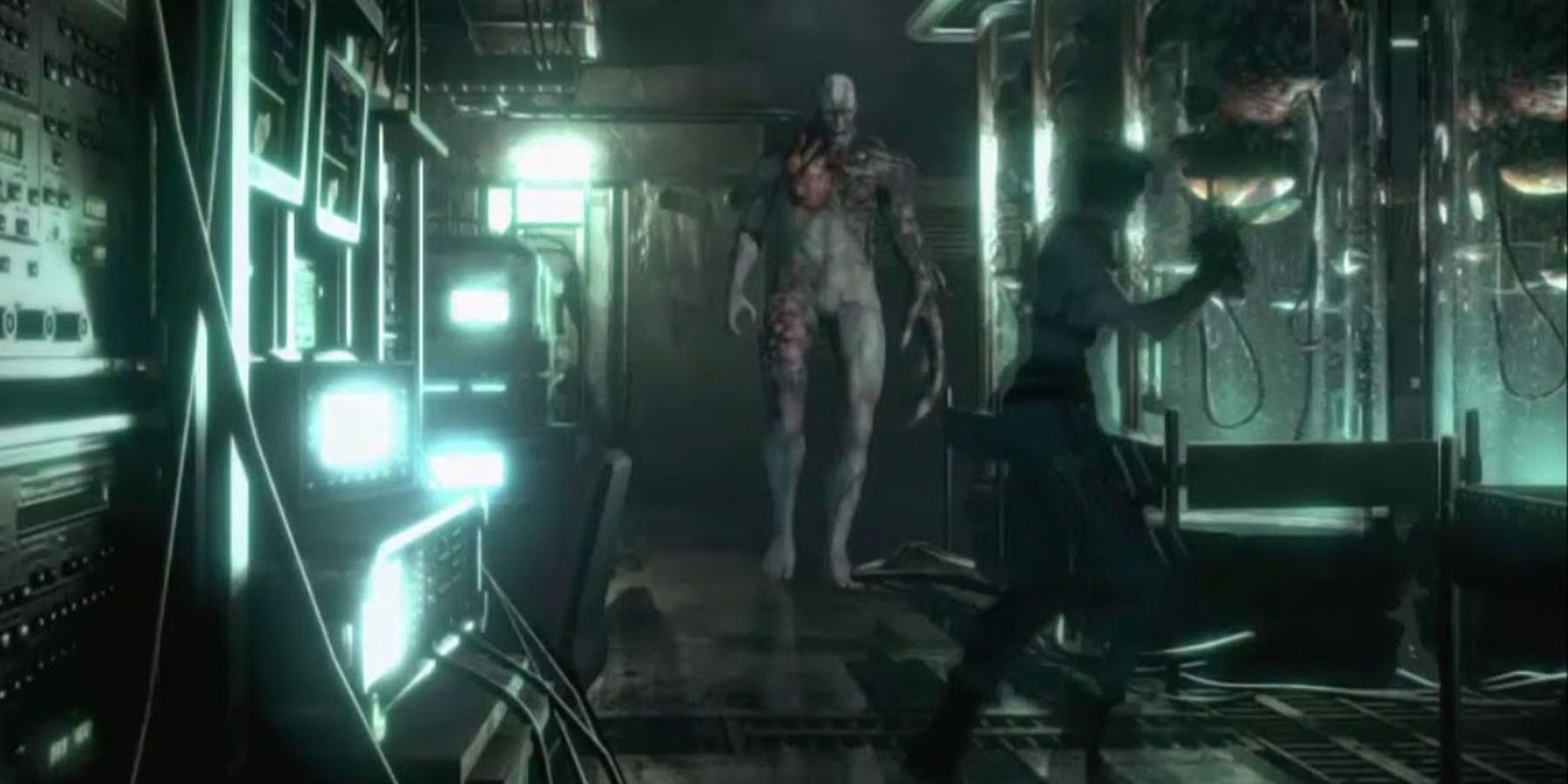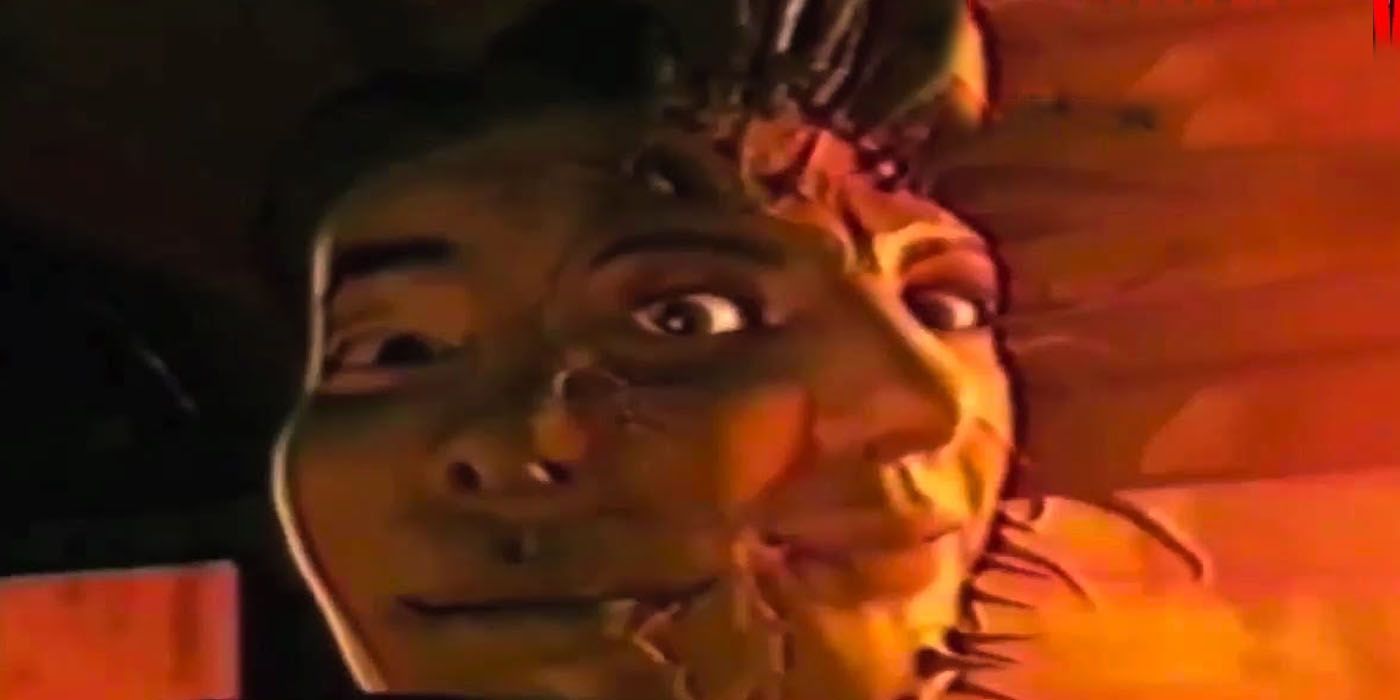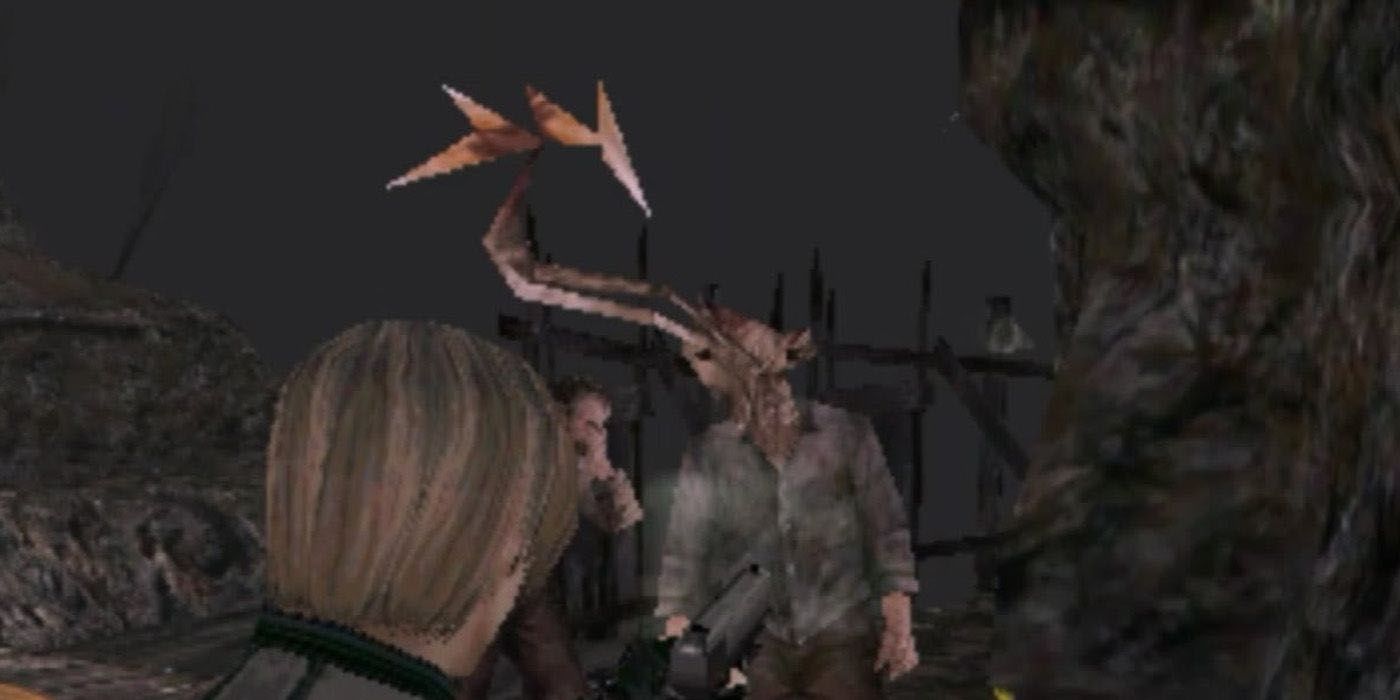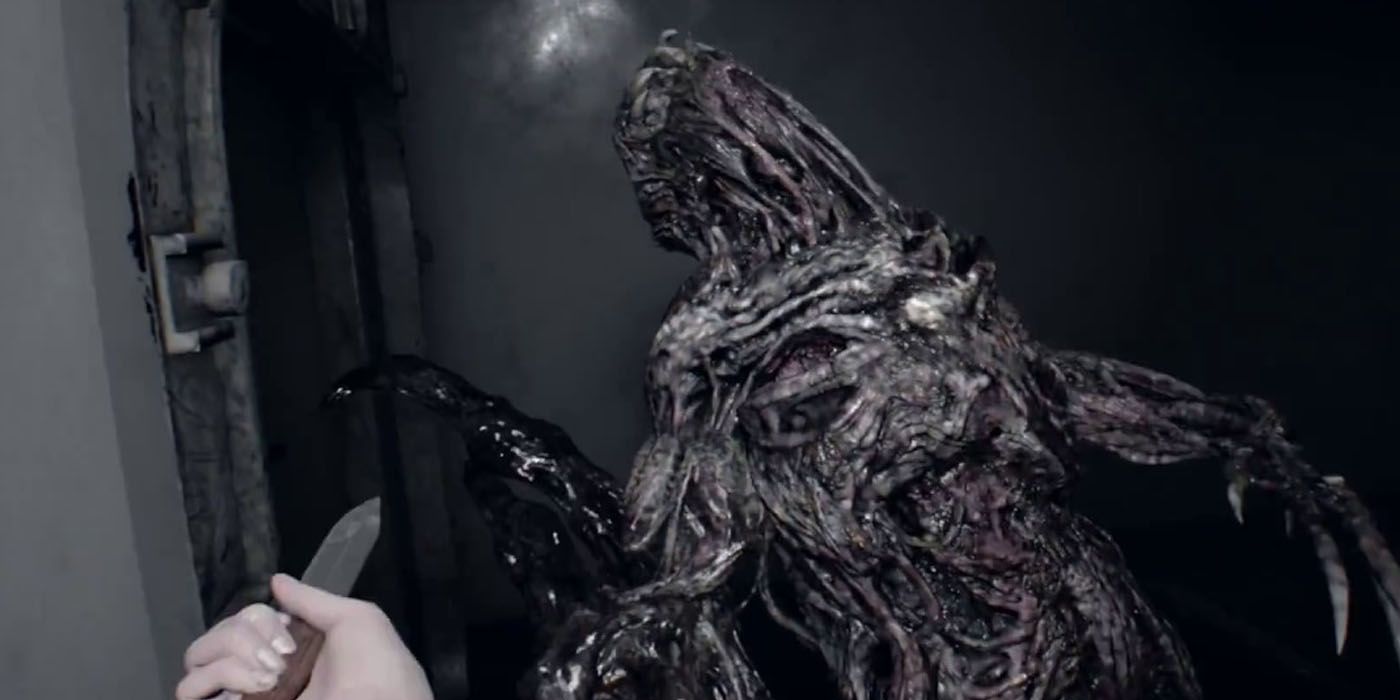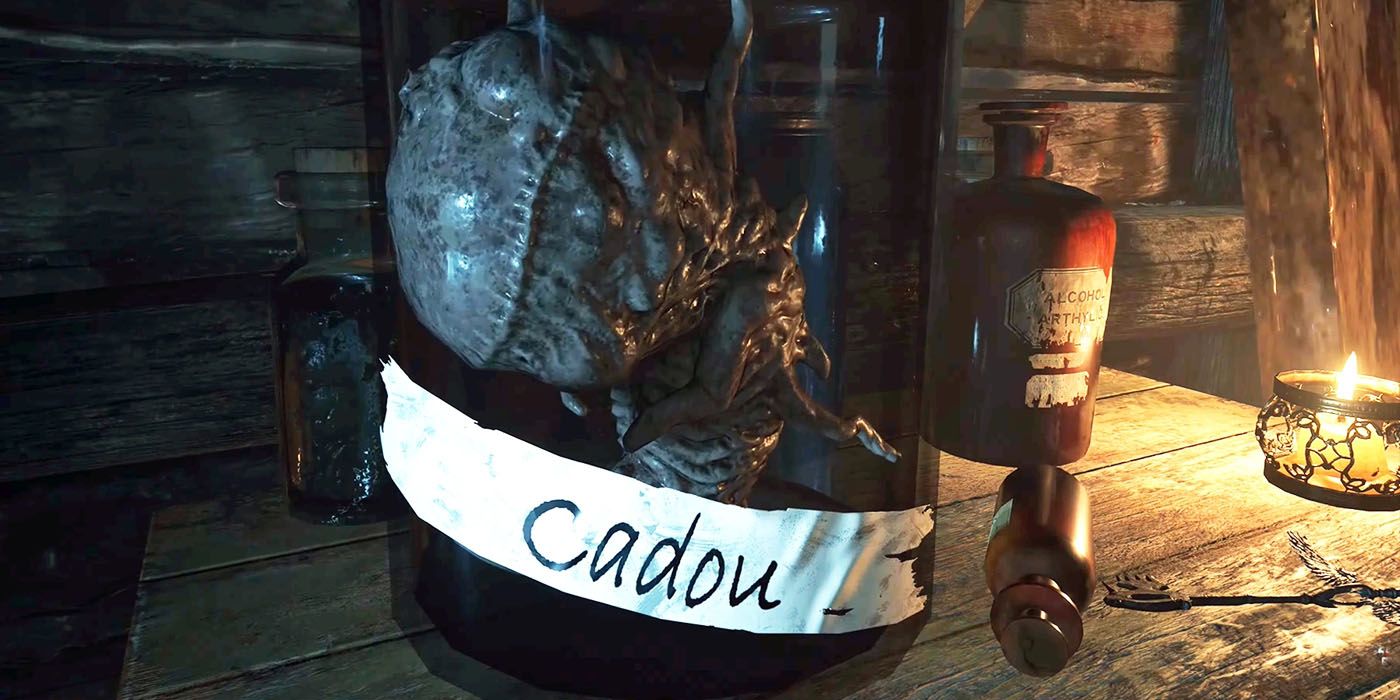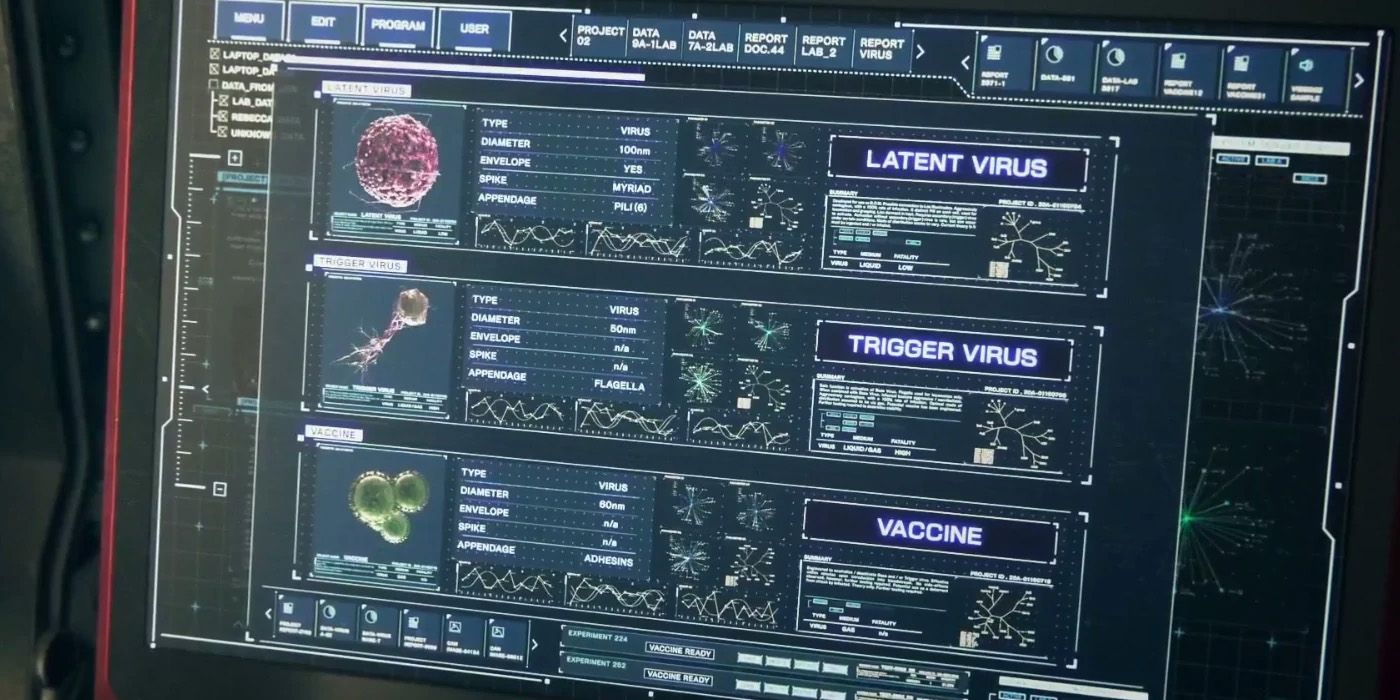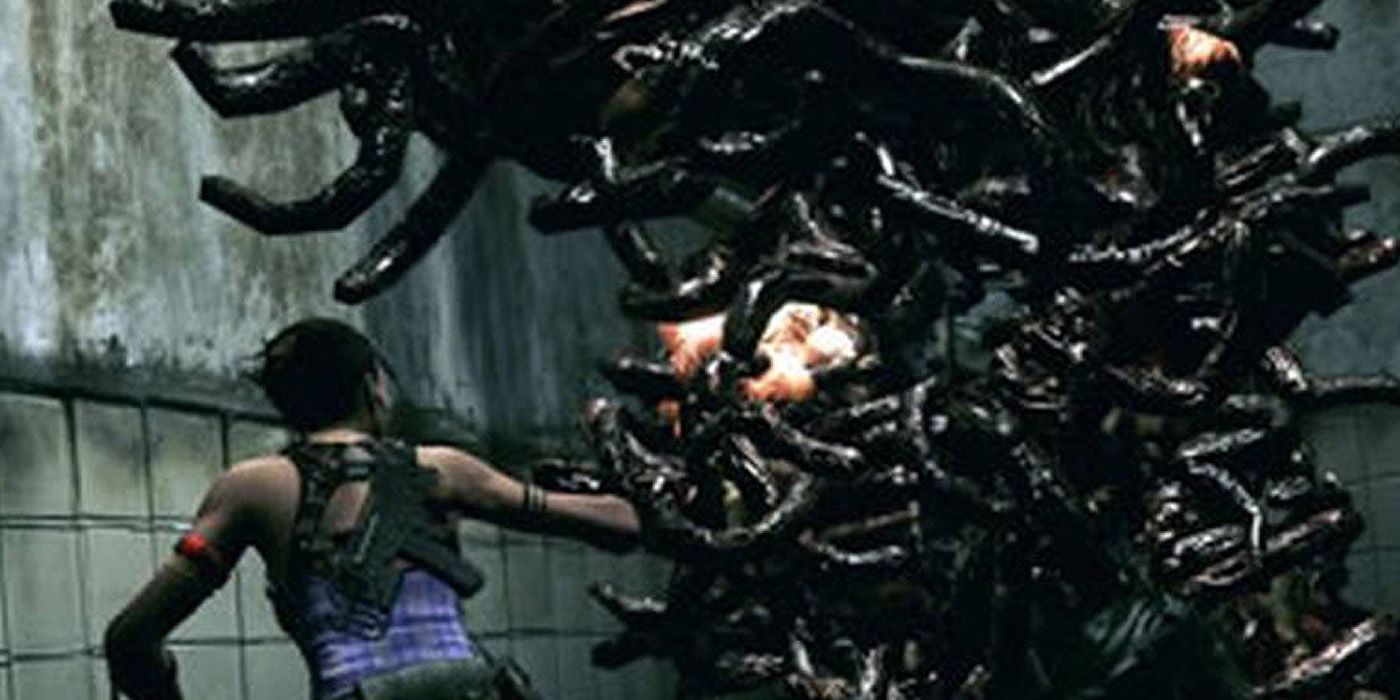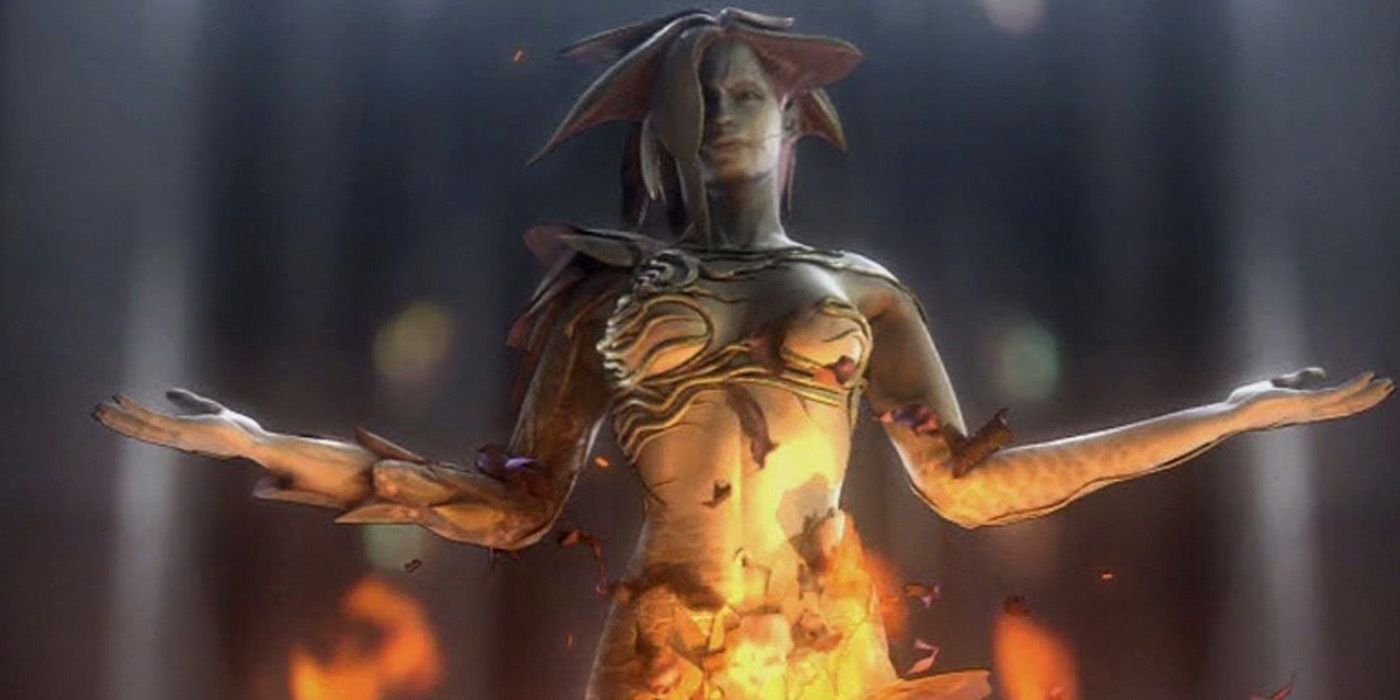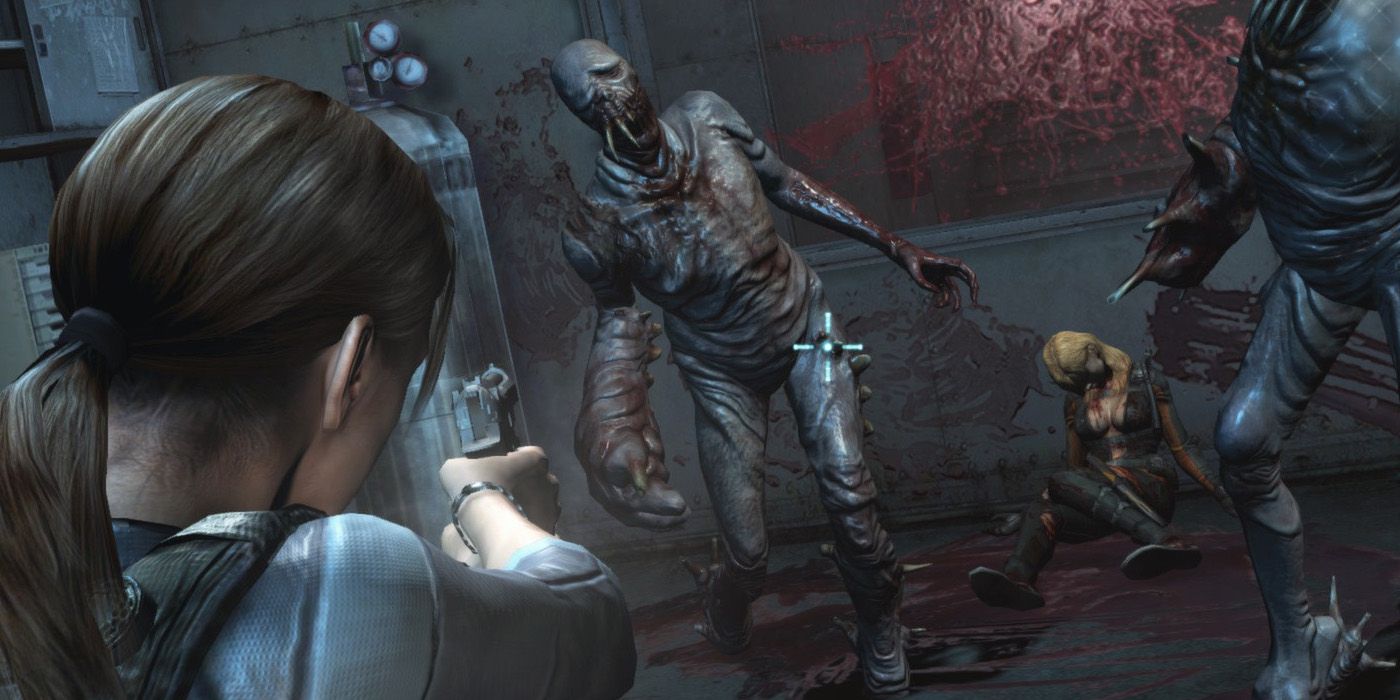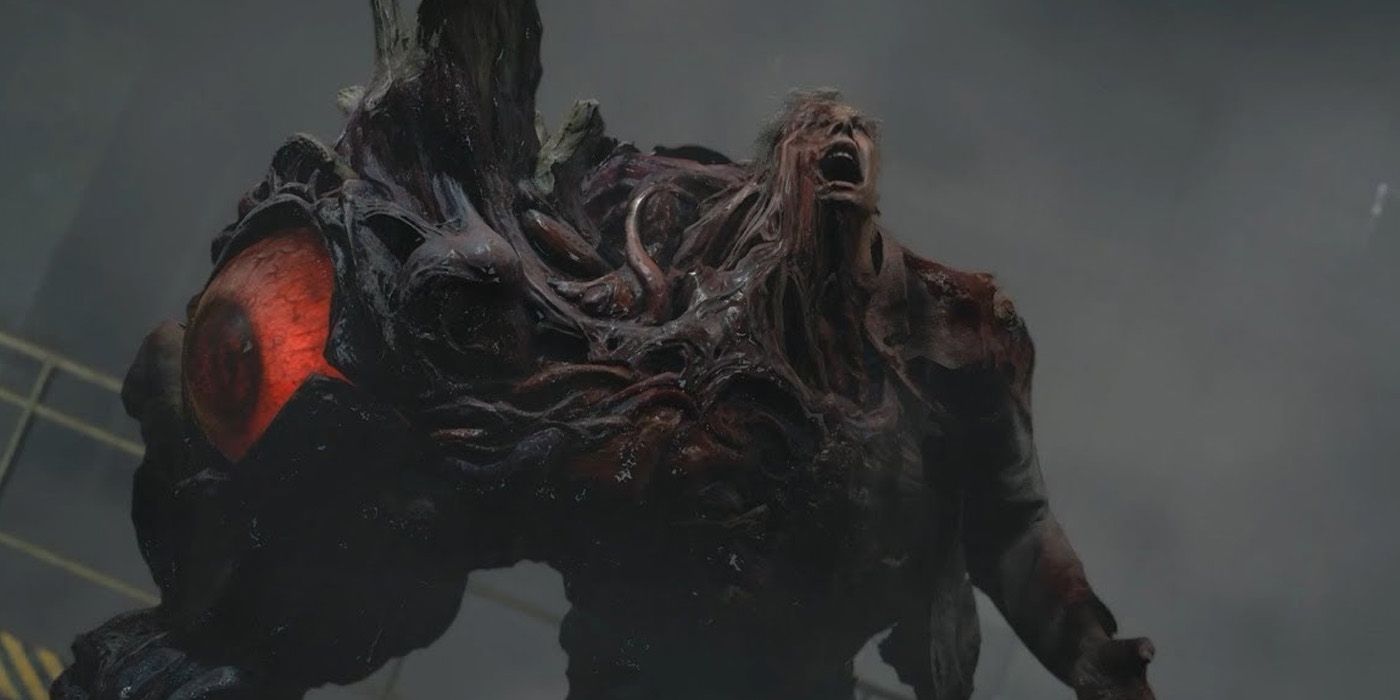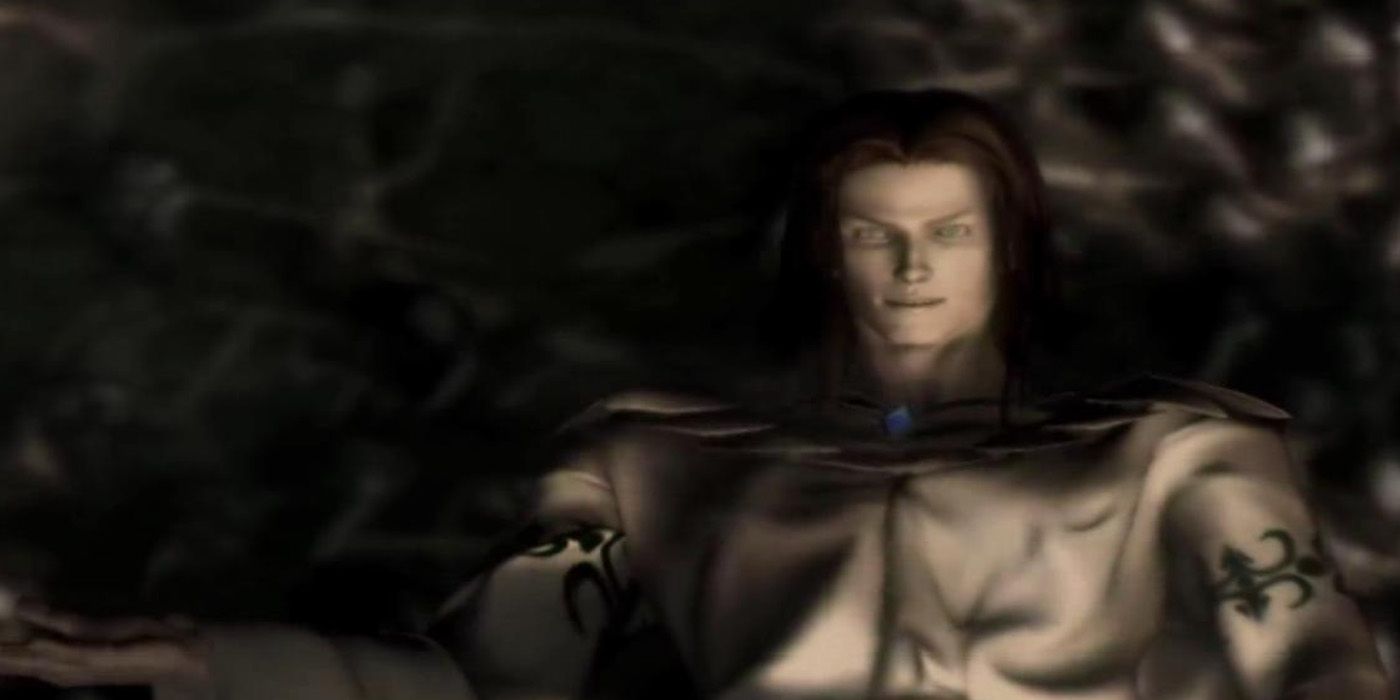Fans of Capcom's Resident Evil franchise love its trademark brand of limited ammunition, zombies at every corner, and a ton of monstrous threats. Moreover, as players will soon learn, almost every outbreak in the series began as a project gone awry from folks at Umbrella Corporation, the de facto "evil organization" in the franchise. However, fans might remember that the games also have their fair share of alternate viruses outside the original T-Virus that plagued the first few games.
In fact, eagle-eyed players might notice that some T-Virus spinoffs seem more dangerous than the original virus. Unfortunately, the forces behind these new strains also want to use them for their own nefarious ends. However, just which viruses in the franchise spark the most terror for players?
Updated on October 30, 2022 by Rhenn Taguiam: With Resident Evil 4 Remake confirmed for a 2023 release, it makes sense for fans of the Resident Evil franchise to brush up on their biohazard knowledge to better grasp the bioterrorism scene prevalent in the world of the franchise. Not only that, but knowing about more viruses in the franchise may give players a better grasp of how Resident Evil 4’s Las Plagas works within the greater Resident Evil landscape.
To do this, fans may want to get to know other unknown viruses in the franchise, including additional strains of the T-Virus, as well as horrifying variants that may upend the global war on bioterrorism had they been left unchecked.
17 Clay Virus
- First appearance: Resident Evil 2 (script only)
Unlike other viruses in the Resident Evil franchise, the Clay Virus isn’t exactly “canon” to the series. Still, it serves as a rather important stepping stone to a virus featured in the story. At the same time, Resident Evil introduces the mysterious Progenitor Virus as the ancient origins of the T-Virus and its subsequent evolutions. However, it was as far back as Resident Evil 2 and Code Veronica that the idea was introduced as a concept, introduced by RE1 and Parasite Eve scriptwriter Kenichi Iwao as the Clay Virus.
Iwao’s vision of the Clay Virus was relatively short and was changed multiple times during Noburo Sugimura’s development in RE5. At its core, the Clay Virus supposedly has four (4) strains, each relatively associated with the T-Virus variants that led to early bosses and creatures in the franchise. These would include the A-Strain (leading to the Neptune shark-based BOW), the B1-Strain (for the Cerberus BOW), the B2-Strain (for the more intelligent Hunter), and the E-Strain for the virus that infected Arklay Laboratory’s staff.
16 T-JCCC203
- First appearance: Resident Evil Outbreak (2003)
One of the most tragic backstories in the Resident Evil horror series is the fact that the vicious T-Virus was partially originally designed as a cure for illnesses. Such was the case of T-JCCC203, a variant of the T-Virus that was only referenced in the Resident Evil Outbreak series through its side stories. The T-JCCC203 was developed as an oncolytic virus targeting cancerous cells. It had illegally entered clinical trials through an unnamed front and had patients of a hospital in the Arklay Mountains act as test subjects.
Both of the virus’s first patients had their cancer cells killed by the virus but in exchange developed extreme appetites associated with zombification. While the first patient Doug Frost died three (3) days after being administered the drug, its second patient Dorothy Lester was consumed by a plant that became monstrous after being infected by T-JCCC203. Perhaps this virus had infected patients under the guise of an effective “curse” makes this horrifying, especially for patients like Lester’s husband. He only volunteered Dorothy to the trial out of desperation.
15 E-Strain (T-Virus)
- First appearance: Resident Evil (1996)
It could be remembered that the “quest” to transform the Tyrant Project into a means to lead to “the perfect human” throughout the Resident Evil series was conducted by two (2) separate teams. It’s among the staff of the Arklay Laboratory that the prototypal E-Strain was developed, partially due to how the B-Strain only led to the creation of the Cerberus zombie dogs. The main objective of the E-Strain is to transform a human into a supersoldier mutant while limiting brain damage to avoid ordinary zombification.
What’s perhaps terrifying about the E-Strain is how it ultimately led to a successful prototype, named T-002 that the STARS team fought in Resident Evil. Another notable trait of E-Strain infected was a secondary mutation, transforming them into more powerful Crimson Heads after extreme injury. It was also the E-Strain that led to the creation of the Lickers, clawed and extremely agile creatures with tongues that can pierce flesh.
14 Cameron Virus
- First appearance: Biohazard 4D-Executer
One of the most bizarre viruses to appear in the franchise is one featured in material fans couldn’t immediately access. The Cameron Virus is a virus strain exclusively featured in Biohazard 4D-Executer, a short film currently shown in Mosaic Garden as a 3D-film experience. The film describes a team of commandos looking for Dr. Cameron trapped in Raccoon City, eventually leading to the deaths of all agents except Cameron herself.
Despite the film only running for around 20 minutes and features some rather exaggerated action scenes reminiscent of pre-Resident Evil Remake games, it was more than enough to reveal the terrifying nature of the virus. Instead of being a T-Virus variant, the Cameron Virus seems to be exclusive to the research of Dr. Cameron, with the virus capable of transferring a host’s consciousness to other creatures. Not only that, but the virus seems capable of giving the infected the ability to mutate other parts of their body, allowing them to grow spikes and tentacles for defense willingly.
13 Plaga
- First Appearance: Parasite, Resident Evil 4 (2005)
Background details in the lore hinted that the Plaga parasites have come from as far as the Neolithic age’s Ndipaya Kingdom in West Africa. Additional information also reveals that Ganados performed human sacrifices associated with the Plaga as depicted in cave art. In turn, the Plaga may have arrived in Spain as far back as the Bronze Age.
Interestingly, it’s thanks to Osmund Saddler that the Plaga officially entered the bioweapons scene. Saddler, alongside the Los Illuminados, created a large research complex to study the Plaga and create new species. In turn, Saddler managed to create Dominant Plagas that didn’t change the host and commanded Recessive Plagas that controlled the host.
Unlike other viral strains, the Plaga parasite can exhibit minimal changes in its host’s appearance and instead affect its central nervous system. If a Plaga and its host survive, the latter receives mutations in the form of enhanced durability and strength - to the point of sustaining gunshot wounds. It’s observed that Plaga themselves use ultra-high frequency sound waves to communicate with each other. Being a “natural” parasite, it’s unknown if it’s possible to rid the world of Plaga for good.
12 Mold
- First Appearance: Superfungus, Resident Evil 7 (2017)
Dr. Miranda stumbled upon a fungal superorganism in a European Village back in the 1900s in an effort to revive her daughter Eva, who had just died from the Spanish flu. Upon its discovery, Miranda observed that the fungus - which she called the Mold - can store both genetic information and memories of organisms it can assimilate. Her research would have her attempt to create a “vessel” for a resurrected Eva. Meanwhile, she gave a sample of the Mold to the Connections for their own bioweapons project.
Over the years, the Mold proved quite effective towards the Connections’ BOW efforts. Due to its properties, the Mold can effectively “control” the minds of its victims - capable of transforming hostile enemies into allies. Of its many variants, the E-Type - eventually Eveline - became the most successful. As observed, the E-Type can use its fungal filaments to create new superorganisms (Molded). Initial infection would have the fungus spread inside its host, granting it regenerative abilities. Later stages of infection would slowly grant them superhuman physique at the cost of degrading mental states. When the fungus has completely infected its host, the physical form becomes unrecognizable and the mind lost.
When Ethan synthesized the E-Necrotoxin compound, he managed to kill Eveline - the only E-Type in existence. It’s unknown whether The Connections has more hidden variants of the Mold or copies of Eveline’s genetic data.
11 Cadou
- First Appearance: Genetically-Engineered Organism, Resident Evil 8 (2021)
While Mother Miranda gave samples of the Mold to the Connections, she also worked on her own experiments with the Mold. Dubbed the Cadou, Mother Miranda orchestrated this organism’s creation after exposing the Mold to a parasitic nematode.
Miranda’s research notes didn’t reveal much about the actual mode of implantation with regards to the Cadou. However, it’s implied that Cadou can infect hosts via implantation, direct injection, or even spreading wounds.
Interestingly, the Cadou seems to exhibit very flexible properties. This is evident when Miranda implanted the Four Lords with the Cadou, which spawned into different abilities. Their experiments further led to new variants of the Cadou. These included bat-like Moroaica and powerful Witches (Dimitrescu), or cybernetic Soldats and Haulers (Heisenberg). Lycans can become more powerful Varcolac (Moreau), or even get to control Cadou-infected hosts from afar (Beneviento).
10 T-Virus
- First Appearance: Resident Evil (1998)
Interestingly enough, the most popular variant of the Resident Evil virus may turn out to be its least lethal. The T-Virus serves as the template for most of the other viruses in the games. In essence, the T-Virus weaponized the Progenitor Virus, bringing out its resurrection qualities and amplifying the aggression and cannibalistic tendencies of the infected.
As a viral agent, Umbrella originally designated the T-Virus as a means to bring their eugenics program - the Wesker Project - into fruition. Instead of resorting to using an army, Umbrella created the T-Virus specifically to infect large populations quickly and have a 100-percent mortality rate. However, Umbrella soon incorporated the T-Virus into the Tyrant Program after discovering a natural immunity amongst 10-percent of any population. This T-Virus spinoff intended to create powerful humanoid weapons (soon BOWs) to kill the surviving populace.
However, thanks to the extensive studies and researches conducted on the T-Virus, it's also one of the easiest viruses to counteract. Moreover, the development of the Daylight Vaccine made the T-Virus the least harmful of the viral agents in the game. Lore-wise, this Daylight Vaccine became part of the standard treatment procedure of outbreaks.
9 Chimera Virus
- First Appearance: BIOHAZARD to the Liberty (2002)
Dr. Robert Chan developed the Chimera Virus as a solution to the T-Virus and its uncontrollable mutations. With the Chimera Virus, T-Virus infected can now mutate through sheer willpower. This ability will be due to the fact that the Chimera Virus also comes with a means of triggering the part of the human genome that "strives for perfection."
Unfortunately, not much is known about the Chimera Virus except for its appearance in the BIOHAZARD to the Liberty light novel. Moreover, more potent virus strains began appearing soon afterward.
Chimera Virus creator Dr. Robert Chan’s Chan Industries is a subsidiary of Umbrella Corporation, which may explain his acquisition of a T-Virus sample.The Chimera Virus also marks the first appearance of a “C-Virus” prior to the Chrysalid Virus.
8 Prototype Virus
- First Appearance: Resident Evil 5 (2009)
Fans of Resident Evil may fondly remember black-clad Albert Wesker and his pair of sunglasses. Moreover, others might call haxx whenever Wesker showed off his incredible strength, speed, and durability against the franchise's heroes. Thanks to Resident Evil 5, players put a stop to Wesker's plans once and for all. However, fans mistakenly say Wesker has the Uroboros Virus. In fact, his abilities stemmed from the Prototype Virus, a T-Virus strain that Wesker and other selected participants of Project Wesker had to take.
Thanks to the Prototype Virus, successful recipient-survivors developed incredible strength and endurance, speed and agility, as well as a healing factor. Apparently, the Prototype Virus only affects lower organs and muscle tissues. Meaning, the lack of impact to the brain keeps the subject’s intellect intact. Due to the strain the Prototype Virus had on ordinary subjects, only specially-cultivated members of Project W (the Wesker Children) can even attempt to take it.
As part of Umbrella's eugenics project, the Prototype Virus tested whether particular Project W candidates had the "markers" needed for human evolution. If they don't, they die from the virus. However, Albert and Alex Wesker survived, with the Prototype Virus giving them more than enough superhuman abilities. Unfortunately, despite the danger the two posed, the difficulty in searching for compatible hosts made the Prototype Virus useless.
7 Chrysalid Virus
- First Appearance: Resident Evil 6 (2012)
The Chrysalid Virus or C-Virus served as The Family's counterpart to Umbrella's T-Virus. When Umbrella shut down years prior, the fraternity The Family took it upon themselves to "fulfill" Umbrella's legacy. Dr. Carla Radames led the project, which involved using a genome that contains elements from the G-Virus and the T-Veronica Virus. As a result, victims not only retained a limited degree of intelligence, but may also manifest extreme mutations depending on genes inserted into them.
With the C-Virus, The Family developed a new way of creating BOWs. Whereas Umbrella had to “clone” successful strains to recreate effective BOWs, the Family instead spliced an individual’s DNA into the C-Virus. This splicing creates a unique strain that The Family inserts into abductees to become unique BOWs. As a result, C-Virus transmission can create a J’avo via direct injection, or Haos and Lepotica via a viral vog.
The adaptability of the C-Virus made it extremely deadly as a weapon. For instance, The Family's Derek Simmons used aspects of the C-Virus to force abducted test subjects to "mutate" into clones of Ada Wong. The C-Virus's approach also allowed The Family to create their own sets of BOWs without the need for cloning, making the C-Virus extremely dangerous if not for the Anti-C Vaccine.
6 Animality Virus
- First Appearance: Resident Evil 5 (2009)
Players of Resident Evil 4 likely remember the Plaga, or the parasite that plagued the village controlled by the Los Illuminados. As it turns out, ex-CIA agent Glenn Arias purchased a Plaga sample and had his team create a virus strain from it. Dubbed the Animality Virus, this strain can create zombies with a "social aspect."
In turn, the Animality Virus acts very much like the Plaga parasite. Its infected zombies suffer the same aggression and cannibalistic tendencies as T-Virus infected. However, the A-Virus has a slower rate of mental degradation, enabling its infected to retain a certain degree of coordination and speech.
According to the original plan, Arias wanted to disperse the A-Virus into parts of New York City for maximum saturation - marking its supposed first large-scale outbreak. However, the BSAA’s Silver Dagger counterterror unit (led by Chris Redfield) and the US Division of Security Operations (with Leon Kennedy) managed to stop his plan. Rebecca Chambers revealed that an A-Virus vaccine halted its infection once and for all.
5 Uroboros Virus
- First Appearance: Resident Evil 5 (2009)
Ironically enough, Albert Wesker's defection from Umbrella helped the defunct company get one step closer to its goal of creating "perfect humans." Moreover, Wesker and his team developed the Uroboros Virus to create a Progenitor variant more geared towards granting superhuman abilities to the infected. Interestingly, the initial form of the virus became too lethal for any test subject to survive. Thankfully, Jill Valentine's dormant T-Virus antibodies "balanced" out the Urhobos formula.
As a result, Uroboros became an extremely lethal virus that bestows its survivors with superhuman abilities. Uroboros does this by "forcing" its infected to "evolve," therefore it could only become compatible with a certain population. Those who failed to integrate with the Uroboros will instead fall prey to its mutations.
When Albert died, his genetic sister Alex continued research in Sejm Island. However, Alex didn’t do much with Uroboros given her efforts with the more stringent yet ineffective T-Phobos Virus. Thankfully, research into Uroboros halted after Albert and Alex Wesker's deaths.
4 T-Veronica Virus
- First Appearance: Resident Evil CODE: Veronica (2000)
Despite "programmable" Tyrants in the Tyrant Project that can follow simple orders, no creature ever "retained" their pre-infection intellect. However, Dr. Alexia Ashford successfully created this much-desired strain with the T-Veronica Virus. Thanks to this strain, its infected not only received the benefits of mutation but also their intellectual capabilities.
Named after Ashford matriarch Veronica, Alexia used ant queens to "fix" the imperfection in the virus strains used on Tyrants. When Alexia used this on herself, she needed an extended incubation period to "perfect" her intellectual retention. Unlike the other viruses, T-Veronica may still force its infected to experience mental degradation. However, this form of mental instability could prove extremely dangerous, as the infected still retained their mental faculties. In turn, a T-Veronica wielder unleashed into the public may become the most dangerous weapon alive.
Only two individuals demonstrated the willpower necessary to “overcome” the mutations coming from the T-Veronica Virus. Aside from its creator Alexia Ashford, Steve Burnside and Manuela eventually overcome the mental degradation the virus caused. In turn, Steve managed to help Claire Redfield in exchange for his own life. Likewise, Manuela retained her humanity despite the blood loss she suffered while saving Leon Kennedy.
3 T-Abyss Virus
- First Appearance: Resident Evil: Revelations (2012)
Despite its short appearance in Revelations, the T-Abyss Virus perhaps posed the most threat out of all the viruses in the franchise. Terrorist group Il Veltro developed the T-Abyss Virus from the Abyss Virus retrovirus endemic to the Kermadec Trench's Hadopelagic zone. As this implies, the Abyss Virus originally infected fish. In turn, the T-Abyss-Virus-infected not only became zombies but develop traits common to marine wildlife. These include suckers and bloated bodies.
Unfortunately, the T-Abyss can also rapidly mutate its hosts to produce more of it. Moreover, with its preference for water, the T-Abyss may pose a significant threat to the world's oceans. In fact, estimations indicate that a fifth of the world's oceans may be affected if the T-Abyss gets released into the world.
While events in Revelations stopped the spread of the virus, laboratories managed to get samples of the Virus for vaccine research. Tricell, a pharmaceutical corporation with its own BOW project, managed to get a sample of the Virus. However, even Tricell opted not to sell the Virus in the market due to being too dangerous as a bioweapon.
2 Golgotha Virus
- First Appearance: Resident Evil 2 (1998)
The G-Virus became the in-house rival of Umbrella USA to the team that developed the T-Virus. However, they're extremely dissimilar in nature. Whereas the T-Virus caused minor mutations to the infected that created zombies, the G-Virus caused extreme mutations. Moreover, G-Virus infectees are asexually reproductive, enabling them to sprout other "infected", unlike the T-Virus.
Moreover, whereas T-Virus infectees suddenly develop mutations upon further injury, the G-Virus naturally repairs dead cells. In addition to the extremely violent and durable nature of its hosts, the G-Virus is one of the worst viruses that may cause an outbreak in Resident Evil lore.
After the events of Raccoon City, other entities still conducted advanced research towards the Golgotha Virus. Its most notable use perhaps came under the hands of Dr. Carla Radames, a member of The Family syndicate. Alongside their sample of the T-Veronica Virus, Radames used their G-Virus sample to create the C-Virus. Thankfully, anti-BOW teams have never faced a G-Virus outbreak before.
1 Progenitor Virus
- First Appearance: Resident Evil 0 (2002)
Found in the Sonnentreppe daisies of West Africa, not much is known about the Progenitor Virus. When Dr. James Marcus, Dr. Brandon Bailey, and Oswell Spencer discovered the Progenitor Virus, they theorized the virus may have been millions or even billions of years old. Moreover, the Progenitor Virus doesn't affect its victims compared to other known viruses.
The Progenitor Virus not only reverses cell aging, but it can also "revive" organisms that have been considered dead. In turn, this can resurrect bacteria or even people. Unfortunately, infections do eventually lead to death.
However, survivors exhibit superhuman abilities, prompting Spencer and company to envision the eugenics project that will lead to the creation of the Umbrella Corporation. Despite its development into the T-Virus, mysteries still remain about the Progenitor Virus and how it can influence the creation of other viruses in the future.






